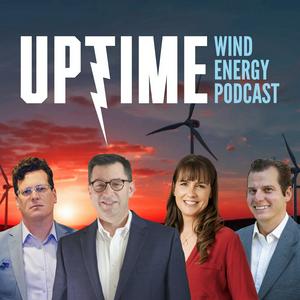Statkraft Withdraws from Floating, Repair Quality Concerns
We discuss Statkraft's withdrawal from floating wind projects in Norway, Valero's $23 million Series A funding, and the varying quality of blade repairs in the field. The Babbitt Ranch wind farm is this week's Wind Farm of the Week.
Sign up now for Uptime Tech News, our weekly email update on all things wind technology. This episode is sponsored by Weather Guard Lightning Tech. Learn more about Weather Guard's StrikeTape Wind Turbine LPS retrofit. Follow the show on Facebook, YouTube, Twitter, Linkedin and visit Weather Guard on the web. And subscribe to Rosemary Barnes' YouTube channel here. Have a question we can answer on the show? Email us!
You are listening to the Uptime Wind Energy Podcast brought to you by build turbines.com. Learn, train, and be a part of the Clean Energy Revolution. Visit build turbines.com today. Now, here's your hosts. Allen Hall, Joel Saxum, Phil Totaro, and Rosemary Barnes.
Allen Hall: Welcome back to the Uptime Wind Energy Podcast.
I have Phil Totaro from California and Joel Saxum down in Austin, Texas. And Rosemary Barnes will join us shortly from the Southern Hemisphere. Uh, a number of news articles this week that we want to talk about Stack Craft. Let's lead off there, up in Norway. So Norwegian energy giant Stack Craft has announced it will withdraw from the upcoming floating wind tenor for the U Sierra North area as part of a broader cost cutting strategy.
Uh, the company, which is Europe's largest renewable energy operator, we're also halt new offshore wind project [00:01:00] development to focus on what CEO, uh, Bergit Ringsted AL calls near term profitable. Strategies unquote. Like solar? No. Come on, solar, wind. There we go. And batteries In fewer markets the decision follows.
Stack craft's early announcement and may stop New green Hydrogen developments signaling a strategic shift toward more immediately profitable renewable energy investments fill. Does this slow down some of the offshore wind work, particularly up in Norway, and it does seem like. Floating will be the future here, but if Stack craft's not gonna be involved and it's right in their backyard, uh, what does this say to the industry?
Phil Totaro: It doesn't send the best signal, but it's also coming in a time when, you know, as we record this, the, the Norwegians just released, uh, four new, uh, wind lease areas with potentially up to 20 different, uh, project [00:02:00] sites. So. It seems like there's a lot of enthusiasm and obviously they've got the wind resource up there to be able to do a lot of floating offshore wind.
If they can work out with their military, you know, the radar interference and all that, uh, there's no reason they shouldn't want this capacity because it's, you know, power that they can use to balance their hydro and power that they can offload to, you know, other Scandinavian countries because there's plenty of transmission already and they're, they're already.
Planning on building more. So, um, it's just whether or not they have the appetite to put the market mechanisms in place to, to actually support these, uh, you know, these, these tenders.
Joel Saxum: I think appetite's the right term here, Phil, when you say that because, uh, you know, and as the CEO is saying in this, in this article we're getting, we're gonna focus more on near term profitable technologies.
So doing things that they know make money, that are proven to make money. You know, we all love the idea of floating [00:03:00] wind, which is, you know, what they're, they're pulling out of this project, your floating wind project. However, nothing's really so sussed out yet. Nothing's really sorted. There's not a specific foundation that works best.
There's not, uh, a, you know, an interconnect that works best. There's not a turbine model that's out there that this is the one, this is what we run with. You don't have support from major OEMs like, you know, oh,

